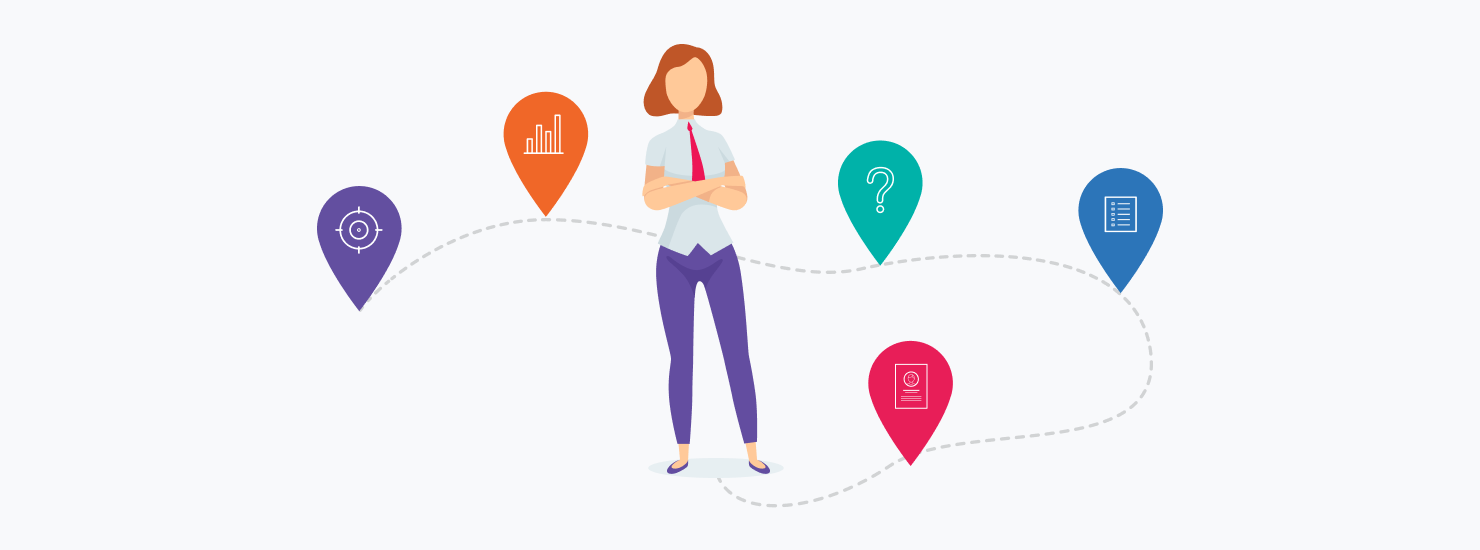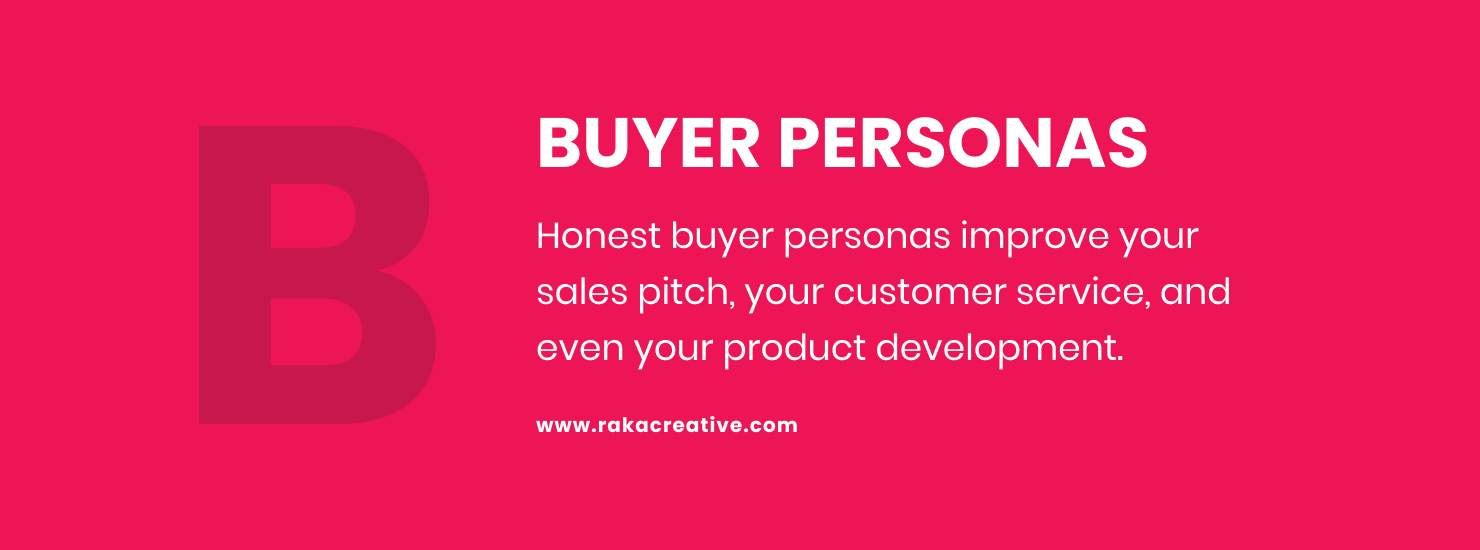This post was updated on April 27, 2020 to include new links to resources, including a more comprehensive and easy to use buyer personas template.
Buyer personas are the foundation of a solid inbound marketing strategy. Understanding what buyer personas are and what personas your company should be targeting is a key first step to engaging with potential customers and attracting leads. So how do you create buyer personas?
Glad you asked! We’ve got a simple, five-step guide to creating buyer personas and a free buyer persona template you can download here when you’re done reading this post.
How to Create Buyer Personas
- Define your ideal customer
- Start with what you know to define your personas
- Do your research
- Compile data
- Build your buyer personas
Step 1: Define your ideal customer
The key to running any business is understanding who your target audience is. If you’re familiar with inbound marketing, you know segments of the target audience are referred to as buyer personas. To build your buyer personas, you’ll want to identify three to five segments of your audience. Focus on the types of customers you’d like to attract in the future—those ideal, right-fit customers.
Next, think about who your company interacts with throughout the sales process. Who makes the final decision to buy and is there an influential gatekeeper that you need to win over before a sale is successful? Are you selling directly to consumers? What types of people are buying your product now and who would you like to sell to?
But what if you can’t whittle it down to five?
If you’re working with a particularly wide target audience, this might seem difficult, but having too many buyer personas can put you in the position where you’ve over-segmented your audience, and generally all that does is create extra, unnecessary work.
For example, your company sells construction tools to distributors, construction companies, and direct to consumers. You might sell to dozens of different kinds of construction companies who all look at themselves as unique, depending on size, location, and what they build. You might be tempted to create a different buyer persona for each type of company. Don’t. Your focus should be on creating personas based on their ultimate goals and how you sell to them.
Don’t worry if you can’t decide on your buyer personas right away. You can increase or pare down the number of hypothetical buyer personas as you go through the rest of the process.
Step 2: Start with what you know to define your personas
To obtain information about your buyer personas, you really need to talk to people who would fall into said personas and get some firsthand information. However, you probably already have a lot of useful information your team has gathered just by working with customers, so start with what you know.
Look at your current customers and any feedback they’ve given—positive or negative. Comments about customer service or the buying experience can be incredibly helpful when it comes to nailing down your buyer personas’ motivations. What kind of questions are they asking about your products or services?
Check out your website, email, and social analytics and look for trends. Are you only getting Facebook Likes when you post a certain type of content? Which types of emails are opened most often, and by whom? All this information can help you fill in where your buyer personas get their information, so you know where to target them in the future.
Talk to the people who interact with your customers the most. Your sales representatives know what questions potential customers are asking and the main objections they hear when people are hesitant to buy. Common questions can be added to your buyer personas so you’re prepared to answer them in the future. Document those sticking points in the sales process as well, so your team can work on how to reduce friction and get that sales flywheel spinning.
Step 3: Do your research
Here’s where you get that firsthand information we were talking about earlier. You’ll need to talk to actual people who fit into your buyer personas to have truly accurate information—you don’t just want to assume that you know what they want.
Consider setting up an online survey or reaching out directly to your customers to see if they’d be willing to answer a short questionnaire (both of which can be created using the questions you developed in step three). Talk to friends or business contacts who might fall into one of the buyer personas and ask them to fill out the survey as well.
You’ll want at least three to five interviews for each persona you’re creating, but don’t stop there if you can get more. You want to be able to anticipate your personas’ questions before they ask them. Then you’ll be ready to create awesome, question-answering, problem-solving marketing content.
To get the right answers, you need to ask the right questions. So before you jump headfirst into the pool of creating buyer personas, make sure you know what information you’ll need.
Sit down with a few members of your marketing and sales teams and write out at least 10 questions you need to answer for each buyer persona. These questions can vary from the simple demographics information to what the persona is specifically looking for in a buying experience.
Here’s a sample list:
- What is your job role? Your title?
- What does a typical day look like?
- What skills are required to do your job?
- Who do you report to? Who reports to you?
- What are your biggest challenges?
- What are your goals?
- How do you learn about new information for your job?
- What social networks do you participate in?
- How do you prefer to interact with vendors?
- What sort of experience are you looking for when it comes to purchasing a new product or service?
Note that we said “at least 10.” There’s no rule that says you can’t have more than 10 questions, but don’t make the list too long. That would make the next step difficult.
Step 4: Compile data
This is the fun part. Take all that data you collected, internally and externally, and boil it down to a concise, useable buyer persona.
Start by giving each persona a name—it’s common to rely on alliteration to make them easier to remember, like Sales Rep Sally or Millennial Mom Mandy. Names also help you think of this semi-fiction representation as a real person, making creating great content for them much easier.
Next, identify who these personas are and what motivates them. Some aspects to think about include:
- Demographic information, such as age, income, location, marital status
- Where they get their information
- Challenges
- Goals
- Common questions they have
- How your company can help
Once you’ve outlined your persona, sit down and write a few sentences telling their story. This is a narrative description of who they are, what motivates them, what problems they are having and what they are seeking for a solution. The story will help fully flesh out the kind of person your company is targeting and make it easier for members of your marketing team to quickly get to know these personas. Save this step for last after you’ve sifted through all the research and identified the most important aspects of each persona.
Step 5: Build your buyer personas
Finally, take the questions you’ve asked your personas and put them in a simple format you can easily refer to again and again—maybe on PowerPoint or Keynote slides. Everyone on your marketing team should read them, know where to find them, and use them as a guide for future content. We’ve put together a buyer persona template you can use to fill in all the data.
Now that you know how to create buyer personas, you’ve got the tools to start engaging, attracting, and delighting customers with an inbound marketing strategy. These personas will help you not only identify who you want to target, but also help you create content that answers their questions and builds trust in your company.






